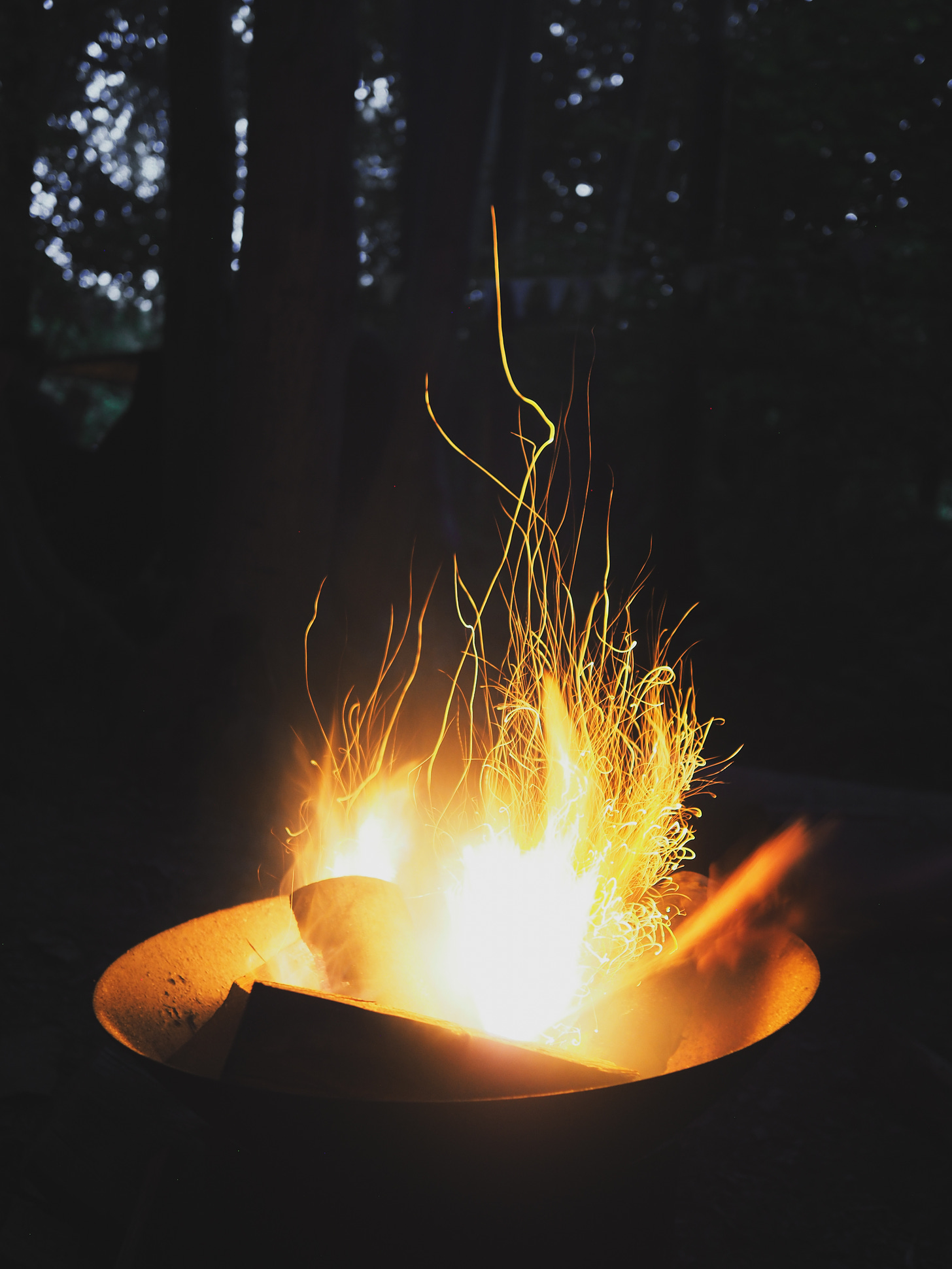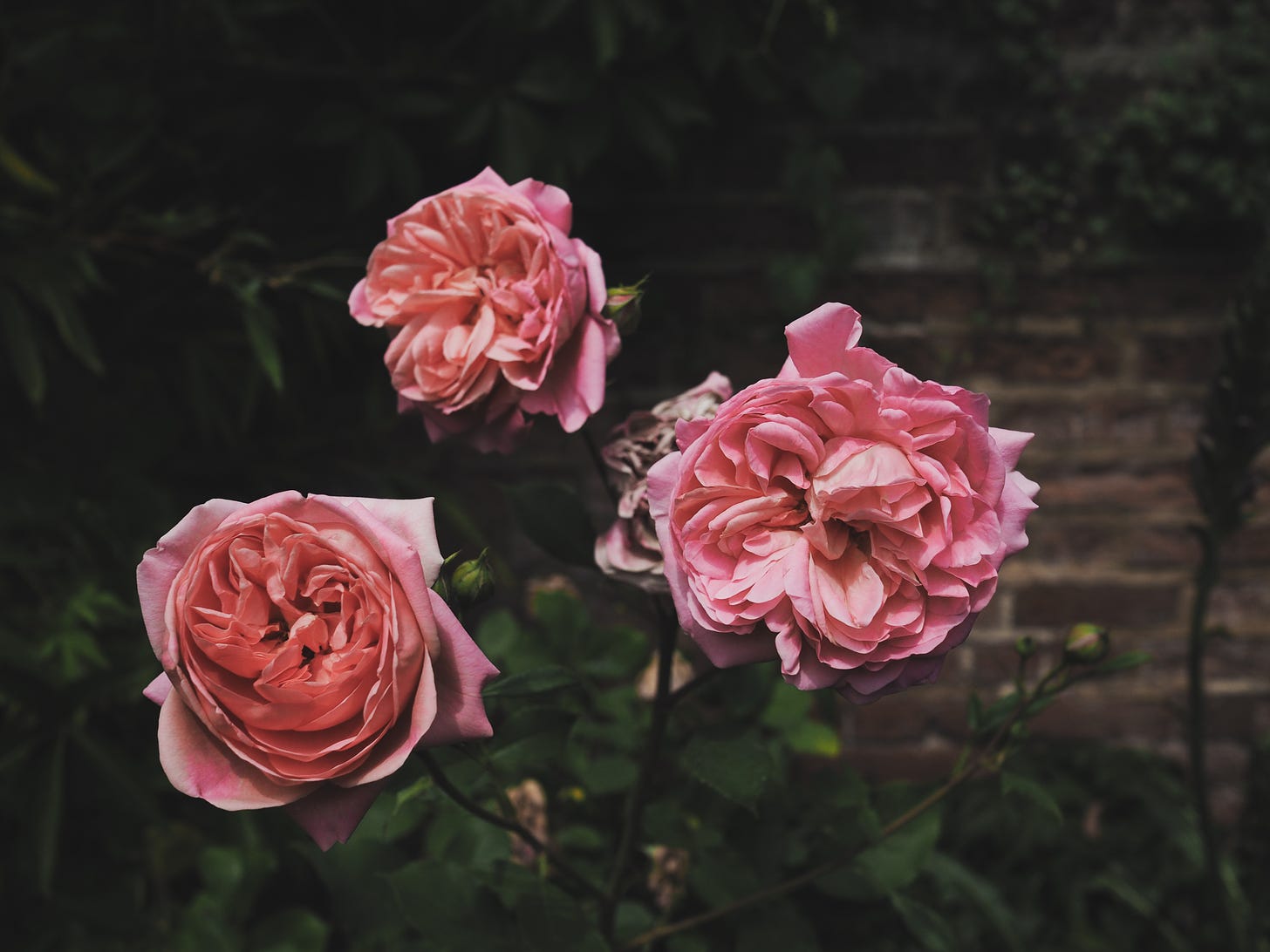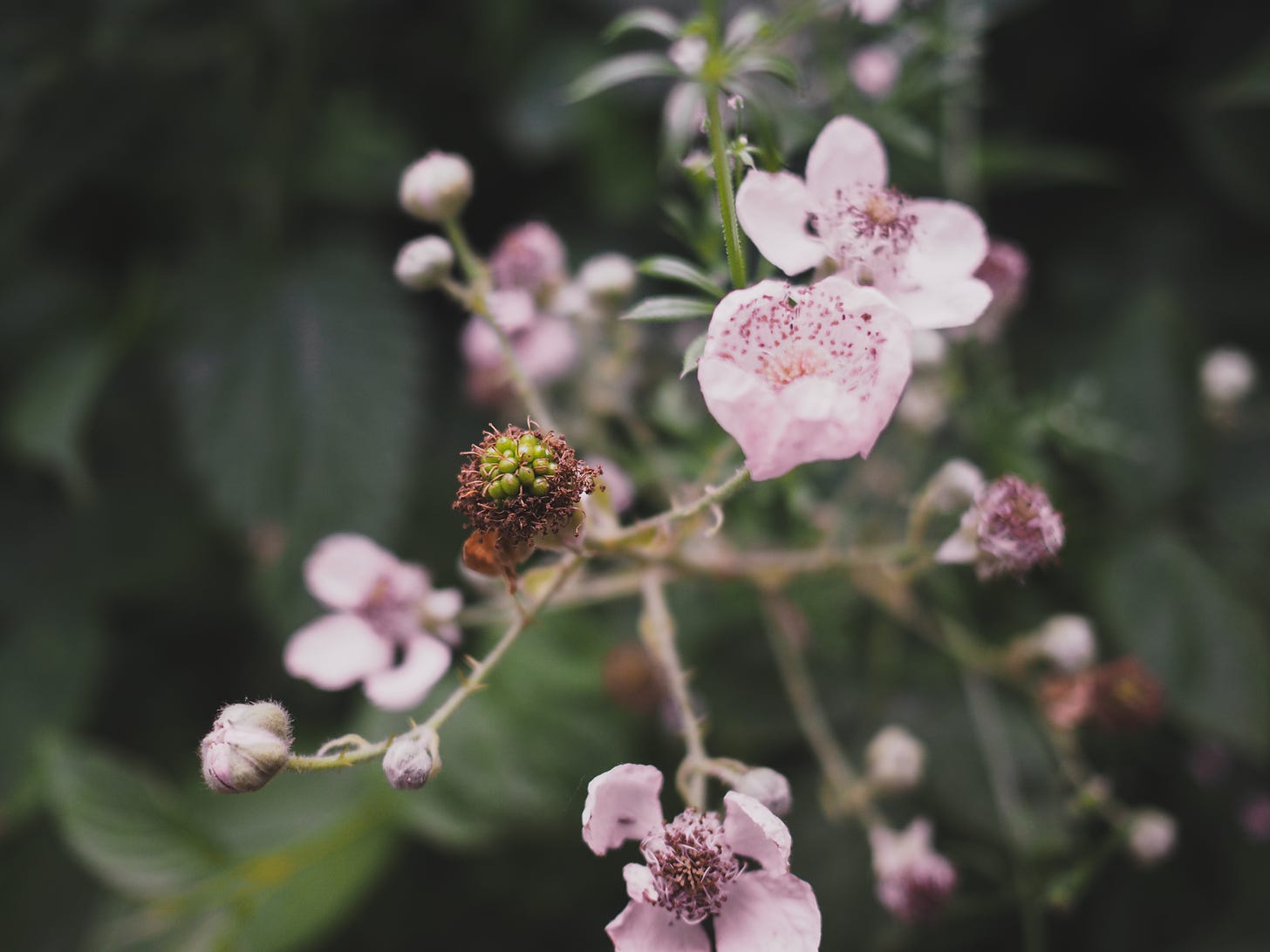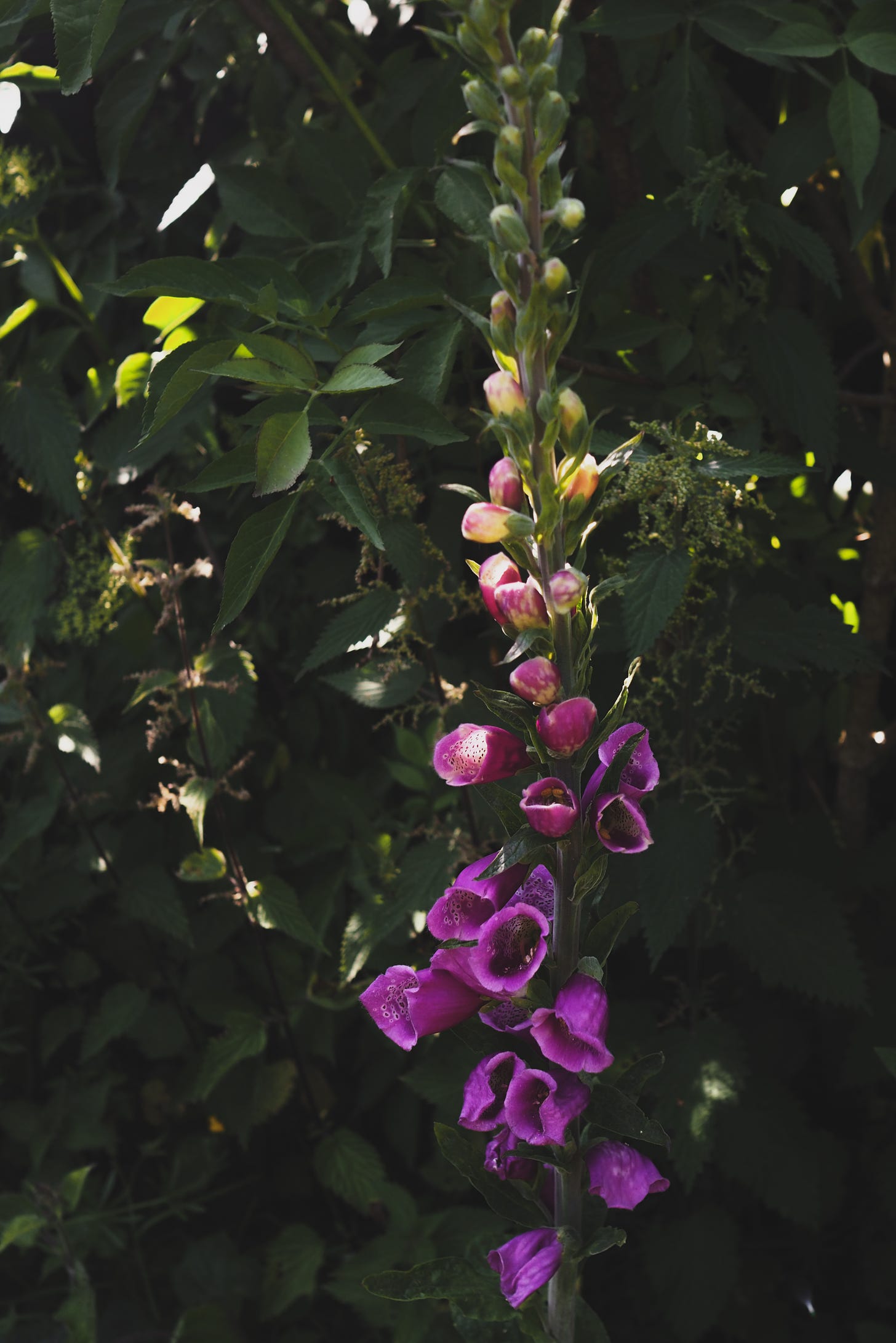Midsummer’s Day: what a beauty. I feel like the humidity has well and truly kicked my arse today, but still, I am basking in the hyper-real colours, the overflowing hedgerows and the life in abundance all around me.
There is an unequivocal vibe to Midsummer. It’s intense, it demands a lot and it is celebratory. I want to join in, but I also want to sit in the shade and not talk to anyone. I want to go to festivals, but I want there to be less crowds. I want to love summer, but I also want it to be calmer and less sweat-inducing. I want what I can’t have. Spring and Autumn are my happiest seasons, a temperate middle ground.
Arriving at Midsummer is yet another reminder that time ticks faster the older you get. I’m nearing my Substack 1 year anniversary, although it has passed faster than the blink of an eye and feels like a month ago rather than a year ago. Thank you for reading my ramblings, I appreciate you all.
One of my favourite aspects of Midsummer is the fact that it’s rose and foxglove season. Two of my favourite blooms. The blousiness, the rambling overflow and the asymmetrical imperfection of both flowers captures something slightly untidy, which I LOVE.
But why am I writing about Midsummer when I have just written a newsletter about summer solstice three days ago? Because they are different. Although the two dates are very close together and therefore often get confused and bundled together, they are not the same.
The rituals of Midsummer vary from those at the summer solstice — which is an astronomical phenomenon based on the earth’s position in relation to the sun — despite the proximity in date.
Anglo-Saxon text from the eleventh century details folkloric plant magic that was associated with Midsummer custom, such as Vervain for liver complaints. Even before the eleventh century, in the fourth century, the pagans of Aquitane celebrated a festival by rolling a flaming wheel downhill to a river. The charred pieces were then reassembled in the temple of a sky god.
A thousand years later, a monk from Gloucestershire referred to the rolling of a burning of wheel on the date of Midsummer’s Eve.1 If this fire wheel went out before it reached the bottom of a hill — and a stream — then it would mean a poor harvest for the next season. If the fire wheel stayed alight the whole way down, the harvest would be good and luck would be bestowed upon the community. Communal Midsummer customs revolving around fire appear prominent from the thirteenth century in Britain. So here we are: another fire-centred festival.
To use the flames (as poignant symbolism) when the greatest fire in the traditional cosmos, the sun, was putting putting out the most strength, is understandable. The spoked wheel was one of the most widespread and popular images of the sun in prehistoric Europe, according to Miranda Green.
As well as Midsummer fire wheels bringing luck, fire also appears to be a purification ritual. Flames, ashes and smoke were believed to bring protection, good luck and blessings to people, land and livestock. In some areas of the UK, fires were lit to ensure that the prevailing wind would carry smoke over the crops, to cleanse them from blight. Additionally, as a celebratory measure, wherever they were lit, the Midsummer fires were always at the centre of feasting and merrymaking. 2
This evening, I went for a long walk to soak up some wildlife and greenery, both of which are lacking in the city where I live. It’s pure oxygen when I head out of the urban environment for the hills. I feel like my breathing stabilises and my mind feels capable of even the most basic of cognitive functions. I really swear by nature as my drug of choice.
This evening, the bunnies were leaping around in some sort of communal multitude. The mugwort is just about to reach its peak, the grasshoppers were dicing with danger across the rural roads and the giant hogweed is the undisputed Queen of the Hedgerow with its towering presence, fragrant petals and long lithe limbs.
Thank you for reading, I hope you enjoy the beautiful season that we’re in, and I wish you a very happy Midsummer.
The Stations of the Sun by Ronald Hutton
The Wheel of the Wiccan Year by Gail Duff








